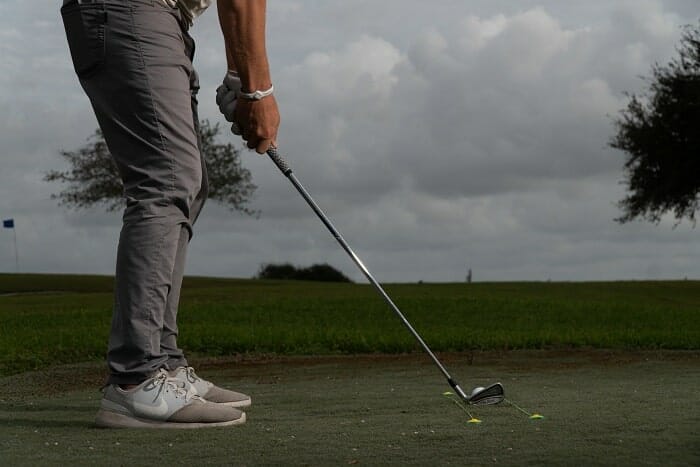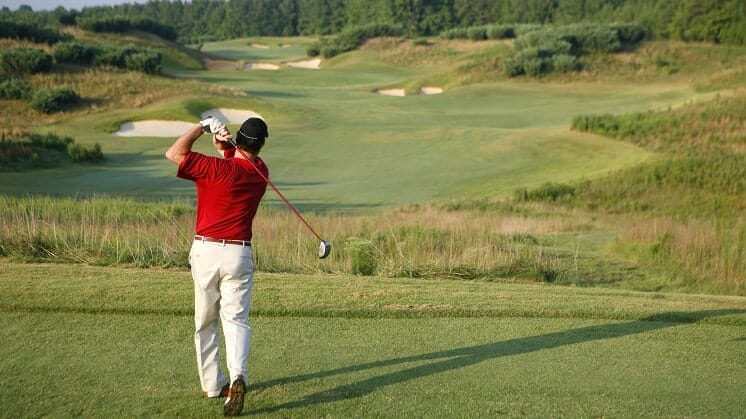Hooking and slicing a ball in golf is a part of every golfer’s journey. Golfers with years of experience know and understand the basics of hook and slice. That’s not to say that it isn’t one of the most frustrating experiences for a golfer.
But it’s best to know the difference between hook and slice as a beginner. As an entry-level player, I’m sure you’re struggling with gaining the distance. As a result, you’re always slicing the ball.
Well, you’re not alone there.
Experienced golfers, who have years and years of experience, struggle with a hook. They struggle with distance too. And you’d think that after so many years of golfing, this should be over by now.
It’s not quite over until you know where you’re going wrong. This article will help you point that out.
Hook and Slice – Factors That Matter in Golf
Hooks and slices can ruin your golf game. And it doesn’t matter what level you’re at. Nor does it matter how old you are. Hook and slice are types of shots that you take in golf. Each has its own variation such as a little slice and a little hook.
When the ball you’ve just hit curves away from you, it’s a slice. And when the ball curves around the axis of the circle, that is you, it’s a hook.
But that’s not all. You need to understand a hook and a slice based on the following factors.
1. Angle of Attack

This is the top factor that contributes to a hook or a slice. And this is what you can control on the green to shape a slice or hook. You can resort to a flat swing by keeping the club’s head closer to the ground.
The distance between the clubhead and the ground should be less while swinging. If you succeed at this, the ball will fly lower than usual and around you. That means it’s a hook.
On the other hand, if you elevate the swing as if you’re chopping down on the ball. It’s going to take a higher flight and curve away from you. That means it’s a slice.
2. Club Path

The angle of attack also influences the club path. And vice versa. It may be a beginner’s luck if you can keep a straight line along your club path. Because it is one of the most difficult things to do. Even for experienced players, as the most struggle with keeping the club straight.
What you also need to keep in mind is crossing the target line. You can do this in one of two ways.
First is when you allow the club to cross from your side of the stance. This means that you hit a hook and as a result, the club path is an in-and-out path.
Second is when the club moves from the outside toward you. This is an out-and-in path which means it has a slightly elevated angle of attack. This, as we’ve already read about, leads to a slice.
Between the first and second club paths, the former is flatter than the latter. This means the ball is more likely to spin when you have a flatter and lower angle of attack. The ball spins toward you and the hook.
3. Club Face

This is the third, and last, factor influencing the angle of attack and the club path. And vice versa.
The face of the clubhead is a crucial element in how you take a shot. If you point the clubface straight, it leads to a squared-off clubface position.
If it’s pointed to your target line which is usually on the left for a right-handed player. Then this is known as a closed clubface position. And this is what leads to a hook.
Lastly, if the clubface is pointed away from your target line, it’s an open clubface position. And this is what leads to a slice.
Difference Between Hook and Slice

The difference between hook and slice is easily understood with the help of these factors. For an experienced golf player, these factors work in combination. But for a beginner, you need to understand them individually.
Here’s what you can summarize about the difference between hook and slice.
How to Fix A Hook?
An improper grip is also one of the key causes of a hook. The correct positioning of your hand over the club is essential. If you can see 2 knuckles of your hand, you’re in the right spot.
Most people are able to see 3 knuckles because they fail to turn their hands clockwise. Your backswing is also an important contributing factor here. If your body is too right during the swing, it will inevitably cause a hook.
How to Fix A Slice?
Proper tempo and a light grip on the club can prevent a slice. You have to keep this stance in mind when the club is hitting the ball. In a square clubface position, you can prevent the ball from curving away from you.
Another great way to fix a slice is to look at where the club is positioned. If it’s directly in the palm of your hand, re-adjust it across your fingers. Keep your energy during the swing in your lower body. And make sure you swing the ball without applying too much bodily pressure.
Final Thoughts
Enjoying a game of golf doesn’t have to be so complicated. And it won’t be – thanks to the simple terms such as hook and slice. Whether you’re practicing your golf drills daily. Or you’re looking to elevate your knowledge out on the greens.
Knowing the difference between hook and slice is important. It helps you deal with not only fixing a hook and slice. But it also points out other areas of your game. Such as the distance, angle of attack, and club path.
Golfers want to gain distance with the help of stable clubhead speed. But achieving this is not always possible. And this is how you struggle with low scores and eventually get frustrated with the game.
What’s missing is your know-how about the mechanics behind a hook and a slice. But that, too, is now taken care of.
Matt Stevens is the founder of Golfrough.com. He holds a Postgraduate in Sports Marketing and has played golf since he was four years old. Having experienced every high and low golf has to offer, his writing helps the average golfer avoid the mistakes he has made in 28-years on the course.

